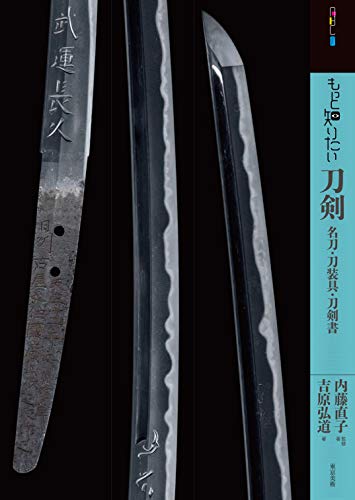- 著者
- 吉原 弘道
- 出版者
- 九州産業大学基礎教育センター
- 雑誌
- 九州産業大学基礎教育センター研究紀要 (ISSN:21856443)
- 巻号頁・発行日
- no.1, pp.103-143, 2011
- 著者
- 吉原 弘道
- 出版者
- 公益財団法人史学会
- 雑誌
- 史學雜誌 (ISSN:00182478)
- 巻号頁・発行日
- vol.111, no.7, pp.35-59, 142-143, 2002-07-20
The conventional research on the position held by Ashikaga Takauji 足利尊氏 within the government formed after the Kenmu 建武 imperial restoration (1334) tends to argue that the warrior leader was excluded from all of its affairs. However, Amino Yoshihiko 網野善彦 has proposed that such a view be reconsidered in the light that the Kenmu government officially gave Takauji charge over Chinzei 鎮西 (Kyushu) military affairs, a subject that is now being pursued by Mori Shigeaki 森茂暁 and Ito Kiyoshi 伊藤喜良. Nevertheless, the conventional skeptical view of Takauji's role has yet to be reconsidered ; and his involvement in the Kenmugovernment has by no means been thoroughly investigated. In the present article, the author conducts a detailed analysis of the time from Takauji's turn against the Kamakura Bakufu in the 4th month of Genko 3 (1333) through the post-coup de'etat settle ment. The research to date has tended to look upon Takauji's involvement in the settlement as anti-government in attitude ; however, it is a fact that 1) Takauji utilized his close relationship with Emperor Go-Daigo to raise troops during the conflict, and 2) petitions for Imperial recognition of deployment (chakuto-jo 着到状) to the battles fought in the Kanto and Chinzei regions were submitted to the Emperor through Takauji. Moreover, Takauji's receipt of these petitions stemmed not from any personal ambition, but rather from his position as an intermediary for the Emperor ; and the authority that Takauji assumed during the incident was not personally usurped, but always based on his relationship to the Emperor, and was finally officially recognized in his appointment as military commander-in-chief of Chinju-fu 鎮守府 on Genko 3/6/5. In addition, his investiture as a minister of state (kugyo 公卿) was an attempt by the Emperor to define his position within the imperial court's organization. The author concludes that rather than being excluded from the affairs of the Kenmu government, Ashikaga Takauji was placed in one of its positions of military responsibility, and from the standpoint of Takauji himself, this role was not the result of some move to expand his own political influence, but rather stemmed from the powers invested in him through his official appointment as commander-in-chief of Chinju-fu.
9 0 0 0 OA 建武政権における足利尊氏の立場 : 元弘の乱での動向と戦後処理を中心として
- 著者
- 吉原 弘道
- 出版者
- 公益財団法人 史学会
- 雑誌
- 史学雑誌 (ISSN:00182478)
- 巻号頁・発行日
- vol.111, no.7, pp.35-59,142-143, 2002-07-20 (Released:2017-12-01)
The conventional research on the position held by Ashikaga Takauji 足利尊氏 within the government formed after the Kenmu 建武 imperial restoration (1334) tends to argue that the warrior leader was excluded from all of its affairs. However, Amino Yoshihiko 網野善彦 has proposed that such a view be reconsidered in the light that the Kenmu government officially gave Takauji charge over Chinzei 鎮西 (Kyushu) military affairs, a subject that is now being pursued by Mori Shigeaki 森茂暁 and Ito Kiyoshi 伊藤喜良. Nevertheless, the conventional skeptical view of Takauji's role has yet to be reconsidered ; and his involvement in the Kenmugovernment has by no means been thoroughly investigated. In the present article, the author conducts a detailed analysis of the time from Takauji's turn against the Kamakura Bakufu in the 4th month of Genko 3 (1333) through the post-coup de'etat settle ment. The research to date has tended to look upon Takauji's involvement in the settlement as anti-government in attitude ; however, it is a fact that 1) Takauji utilized his close relationship with Emperor Go-Daigo to raise troops during the conflict, and 2) petitions for Imperial recognition of deployment (chakuto-jo 着到状) to the battles fought in the Kanto and Chinzei regions were submitted to the Emperor through Takauji. Moreover, Takauji's receipt of these petitions stemmed not from any personal ambition, but rather from his position as an intermediary for the Emperor ; and the authority that Takauji assumed during the incident was not personally usurped, but always based on his relationship to the Emperor, and was finally officially recognized in his appointment as military commander-in-chief of Chinju-fu 鎮守府 on Genko 3/6/5. In addition, his investiture as a minister of state (kugyo 公卿) was an attempt by the Emperor to define his position within the imperial court's organization. The author concludes that rather than being excluded from the affairs of the Kenmu government, Ashikaga Takauji was placed in one of its positions of military responsibility, and from the standpoint of Takauji himself, this role was not the result of some move to expand his own political influence, but rather stemmed from the powers invested in him through his official appointment as commander-in-chief of Chinju-fu.
7 0 0 0 「銘尽(龍造寺本)]の復元と収録刀工
- 著者
- 吉原 弘道
- 出版者
- 九州産業大学基礎教育センター
- 雑誌
- 九州産業大学基礎教育センター研究紀要 (ISSN:21856443)
- 巻号頁・発行日
- no.9, pp.67-98, 2019
